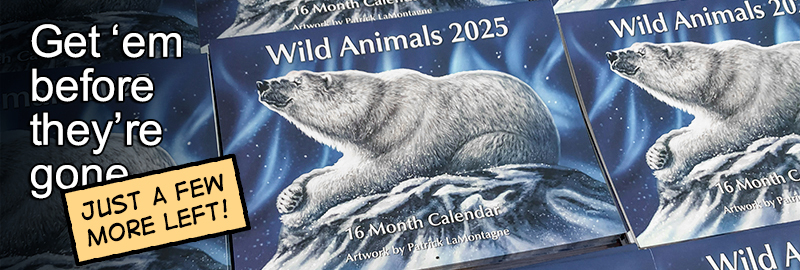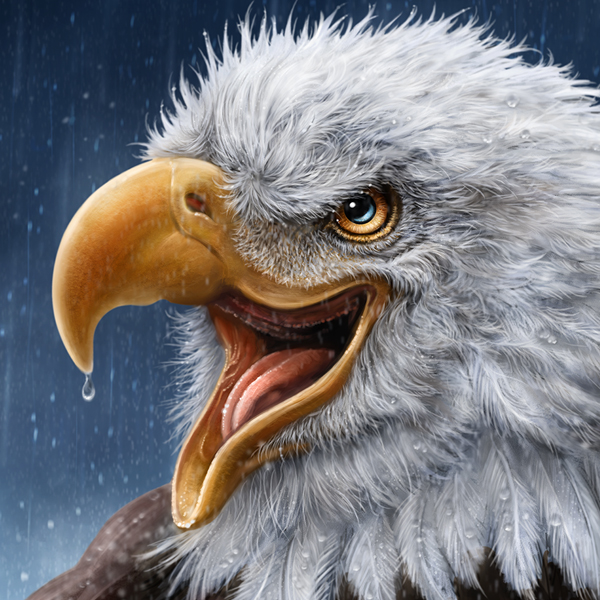
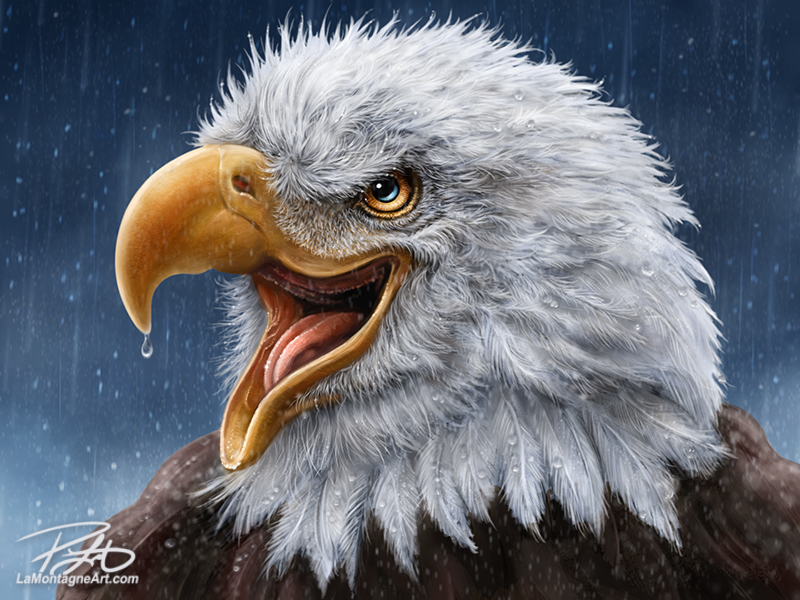 Painting the wet look in this one was challenging because I had to decide where to draw the line. I could have added more rain in the background and foreground, but I’d risk it looking too busy. The same could be said for the water droplets I painted on the feathers. More definition might equal more distraction.
Painting the wet look in this one was challenging because I had to decide where to draw the line. I could have added more rain in the background and foreground, but I’d risk it looking too busy. The same could be said for the water droplets I painted on the feathers. More definition might equal more distraction.
Had I made the eagle wetter, it would mean flattening the feathers, making a dome out of the crown of its head. More accurate, perhaps, but I like painting fur and feathers, so I kept the wet look but still showed the definition. Maybe it had just given its head a shake.
Ultimately, I chose to go with what I do best: the detail in the face, expression and personality. Too much time spent on painting the forest might mean nobody sees the tree. A painting is not defined only by what you include but also what you choose to leave out.
I already have a bald eagle painting that’s been popular for many years in both prints and licensing. It often feels that if I paint more than one of an animal, the second might not be as good as the first, or at least as well received.
That’s foolish, of course.
People like both of my Snow Leopard and Snow Queen paintings. I’ve watched snow leopard fans choose between them at markets, and neither is the consistent winner. I’ve also painted more bears than any other animal, and there’s no chance I’ll stop anytime soon. I’ve also heard no complaints.
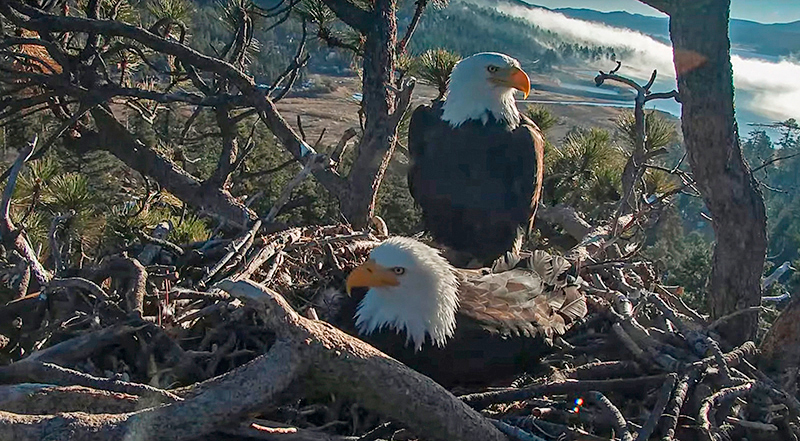
I’ve seen plenty of eagles on several trips to Vancouver Island and on visits to the Alberta Birds of Prey Centre in Coaldale. A few years ago, a subscriber (Hi, Eileen!) sent me a link to a wildlife cam near her home in Big Bear Valley, California. Ever since then, right around this time, I enjoy checking in on Jackie and Shadow as they try again for another viable clutch of eggs. Nothing so far, but fingers crossed.
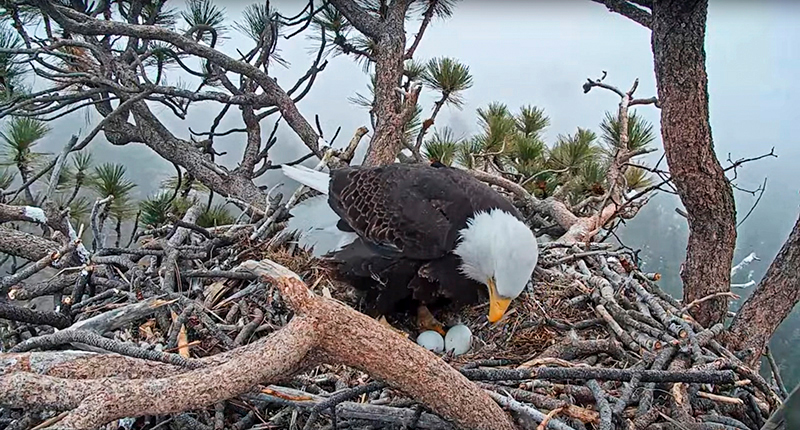 Though we romanticize eagles, imagining them soaring high in the sky for the sheer joy of flying, they’re experts at energy conservation and efficiency. Flying takes a lot of effort, and unless it’s for food or mating, an eagle is most content sitting in a tree all day. That’s also why some scavenge and eat carrion when available rather than hunt for fresh prey.
Though we romanticize eagles, imagining them soaring high in the sky for the sheer joy of flying, they’re experts at energy conservation and efficiency. Flying takes a lot of effort, and unless it’s for food or mating, an eagle is most content sitting in a tree all day. That’s also why some scavenge and eat carrion when available rather than hunt for fresh prey.
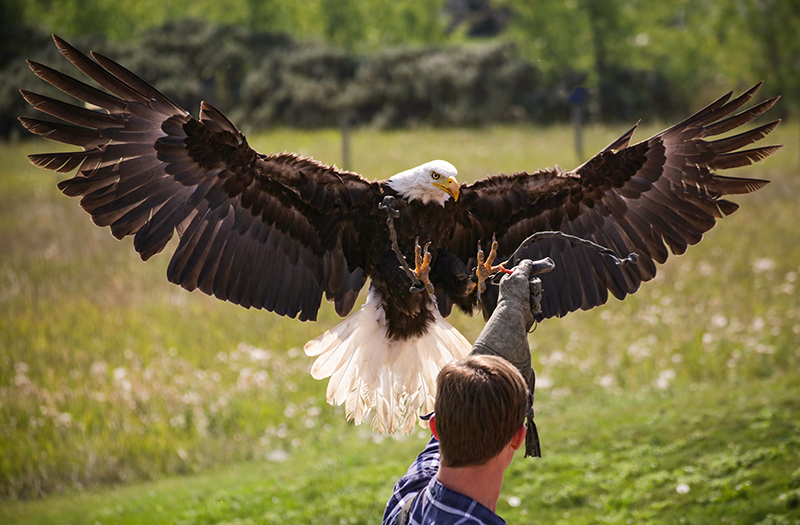 They have exercise runways at the Birds of Prey Centre, and the flight training is fun to watch. Though they try to release most rescued birds back into the wild, it’s not always an option and some become residents. The staff weigh the birds to keep them hungry enough that food is still a motivator. When it’s time for exercise, food rewards entice the birds to fly back and forth on the runways.
They have exercise runways at the Birds of Prey Centre, and the flight training is fun to watch. Though they try to release most rescued birds back into the wild, it’s not always an option and some become residents. The staff weigh the birds to keep them hungry enough that food is still a motivator. When it’s time for exercise, food rewards entice the birds to fly back and forth on the runways.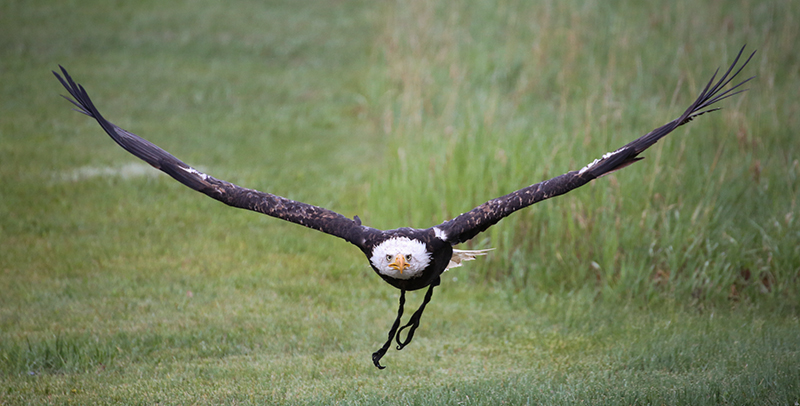 It doesn’t take many trips for the eagles and hawks to get tired, and bald eagles and other raptors will overheat if they fly a lot. They cool off by holding their wings open and panting like dogs. After training sessions, especially on warm days, the eagles return to the open aviary for a shower. Placed on a perch, the staff hose them down, and the eagles obviously enjoy it.
It doesn’t take many trips for the eagles and hawks to get tired, and bald eagles and other raptors will overheat if they fly a lot. They cool off by holding their wings open and panting like dogs. After training sessions, especially on warm days, the eagles return to the open aviary for a shower. Placed on a perch, the staff hose them down, and the eagles obviously enjoy it.
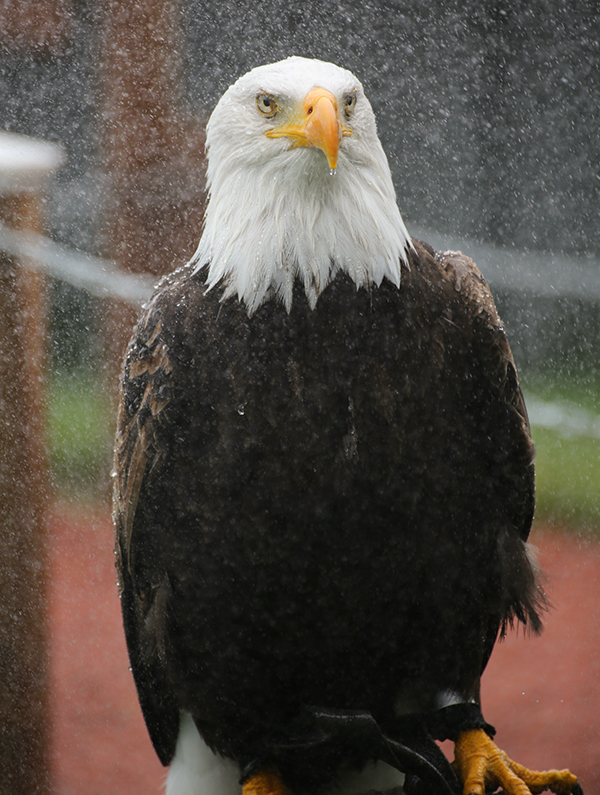 I’ve taken several wet eagle photos on multiple visits, and had the idea for this painting a few years ago. My recent trip down there this summer reminded me to paint this raptor in the rain.
I’ve taken several wet eagle photos on multiple visits, and had the idea for this painting a few years ago. My recent trip down there this summer reminded me to paint this raptor in the rain.
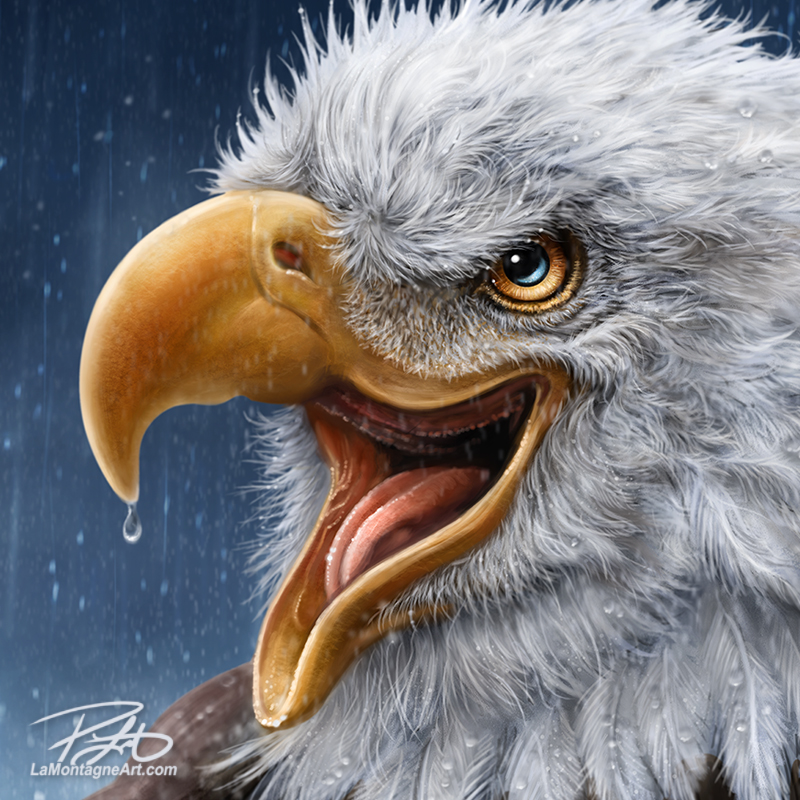
Cheers,
Patrick
